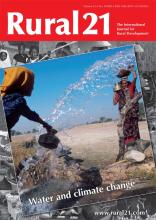Land Library
Welcome to the Land Portal Library. Explore our vast collection of open-access resources (over 74,000) including reports, journal articles, research papers, peer-reviewed publications, legal documents, videos and much more.
/ library resources
Showing items 235 through 243 of 314.Developing countries, as a group, are the ones most threatened by the hydrological impacts of global climate change. Water is a critical resource in development, and it is affected by climate change in multiple, complex ways ?
The Himalayan region is not only tectonically active and ecologically fragile but is it also one of the most economically underdeveloped and most densely populated mountain ecosystems on the planet.
The economy of the Amazon region relies heavily on water for transport and livelihoods.
The River Nile provides an invaluable source of livelihoods to over 160 million of people who dwell in its valley. The river valley is renowned for being a cradle of civilisation. As the populations grew and civilisation evolved, the demand for more water resources took a toll in the region.
Water and soils are increasingly becoming a limiting resource for meeting the food requirements
of a growing world population. Integrated concepts for managing natural resources in a sustainable
and environmentally sound manner show encouraging impacts, if applied on a large scale and
Poverty in rural households have deepened in the past two years through world events: unprecedented rises in food and fuel prices were followed by global economic meltdown, all amidst growing climate uncertainty.
Water is scarce in India's semiarid zones of Rajasthan. Climate change is putting additional pressure on the rare resources. Irregular or no rainfall forces many small farmers to abandon their fields, at least temporarily, and seek work in the towns.
Many adaptation measures urgently needed in agriculture today as a consequence of climate change concern water in agriculture and were already devised and implemented in the 1980s as a part of rural development activities. However, most of the experience and knowledge have sunk without trace.
The world food crisis has spurred foreign direct investments (FDI) into arable land in developing countries. While significant financial inflows into agricultural sectors could be beneficial on a global scale, it could negatively affect local livelihoods.

